Easter Weekend Weather Forecast
A slow moving low pressure system is meandering off the New England coast while high pressure is building in from the west.
The low will not have any direct impacts on our weather, with its cloud shield far to the east and precipitation hundreds of miles away.
However, the interplay between the low and the incoming high will lead to an increase in wind speed today.
Northwest winds will build to around 15 mph with top gusts around 35 mph. The strongest winds will come during the afternoon, but even tonight, it will remain a bit blustery.
A small impulse of atmospheric energy is caught up between the high and the low and will bring a few clouds to mix with the sunshine later this morning into the afternoon. No precipitation will fall.
Temperatures today will be a couple degrees cooler than yesterday thanks to the increase in northwesterly winds. Higher terrain will top out in the low 40s while lower elevations will be in the mid 40s.
Skies will turn mostly clear tonight, though a few lingering clouds will still hang around early on. Overnight lows will range from the low 30s downwind of Lake Ontario to pockets of mid 20s.
Any early sun on Saturday will quickly be replaced by increasing and thickening cloud cover. By the second half of the afternoon, some rain showers may pass through the region. The best chance for rain will be over western and southern areas, roughly south of a Rochester-Geneva-Ithaca line.
Northwest winds will persist on Saturday but will be much lighter with speeds near or slightly above 5 mph. Afternoon highs will range from the mid 40s near Lake Ontario and in the hills south of Syracuse to the mid 50s in the broad valleys of the Southern Tier.
Rain will increase Saturday night and eventually mix with or turn to some light snow. This should quickly end before sunrise, though a few lingering snow showers may continue into the mid-morning. Only a light coating of accumulation is expected in select areas.
Sunshine will increase during the midday and early afternoon on Sunday, only to be replaced by a new area of clouds as the afternoon goes on.
Temperatures on Sunday will be similarly distributed as on Saturday, ranging from the mid 40s to the mid 50s in the same areas.

Weather Next Week
A frontal boundary will set up to our south on Monday, stretching roughly from Nebraska to Delaware.
This front will bring plenty of clouds to the area on Monday, and a few rain showers in the Southern Tier cannot be ruled out. If the front comes a bit further north, those rain showers would as well.
Temperatures will be a bit more uniform than over the weekend, with upper 40s in the higher elevations and low 50s in the lower elevations. Winds will be light from the north.
As low pressure rides along the front and strengthens, warmer air will push the front northward.
Rain will increase on Tuesday, especially later in the day. High temperatures should remain near 50 degrees.
The low will pass through the area on Wednesday, keeping rain showers in the area. The question then becomes whether a new low forms along the coast, pulling cold air into the area.
Several models show snow Wednesday night with accumulations, though obviously it is far too early to tell how much, if any, sticks.
Lingering snow showers will be possible on Thursday with cool air settling in. Highs look to be around 40 degrees.
A significant warm up is then expected to take place next weekend with highs possibly pushing 60 degrees as soon as Sunday.
Monday, April 8th, looks warm for the eclipse. While still very early, there is at least hope for sunshine if high pressure from the weekend can hold on long enough.
More Information:
» Finger Lakes Weather Radar
» Zip Code Forecasts
» Get the FLX Weather Mobile App

This graphic represents an average over the entire Finger Lakes region. Localized variations should be expected.


Andrew
Hi Drew, love the site. RE: Eclipse weather, I viewed the 2017 eclipse on the NC/TN border. Anecdotally, the day got cloudier and cloudier and then cleared up 20 minutes before totality. Someone told me that the temperature differential from the shadow can be significant enough to drive clouds away. I would imagine that it wouldn’t make a difference for heavy grey skies, but is this a real effect?
Meteorologist Drew Montreuil
Hi Andrew. Great question. The 2017 eclipse was in August, and during the summertime months (especially down south), many of the clouds are driven by the daytime heating cycle. As the ground warms, the air rises, and clouds form. As the sun gets more and more obscured during the eclipse, that surface heating is lost and temperatures drop. This interruption to the cycle can indeed cause the clouds to dissipate, just as is often the case in the evening twilight of the summer months.
Now, for this eclipse, in early April, in Upstate NY, that effect will probably not be a big factor unless some of the more extreme temperature profiles showing the models (75º+) come to pass and we end up with a somewhat summer-like day. You are also correct in thinking that this effect disappears with “heavy grey skies”, which would be generated by other forces in the atmosphere than daytime heating and would not be impacted by the decrease in sunlight. These types of clouds are much more likely in early April and will be what we need to watch out for.